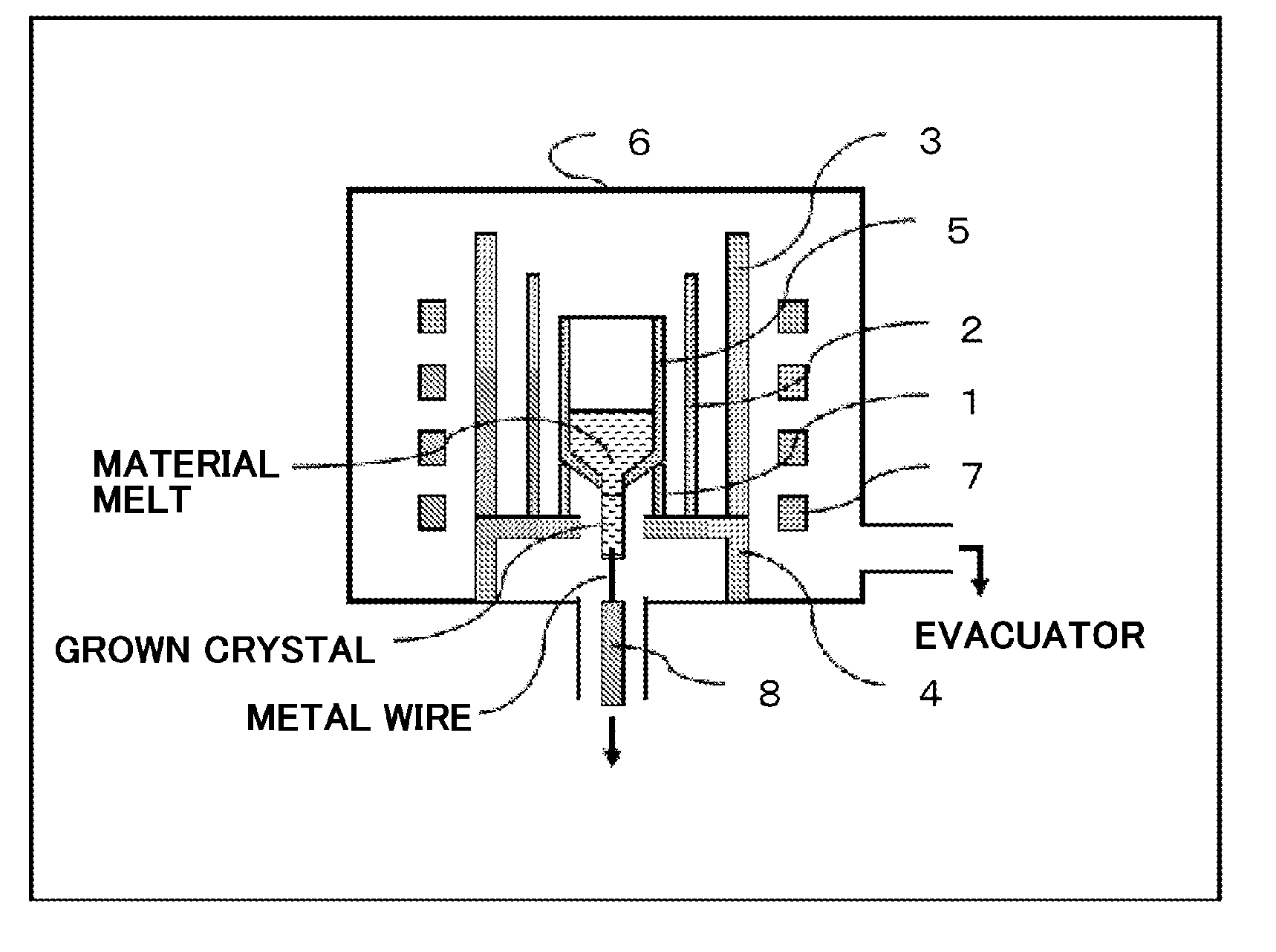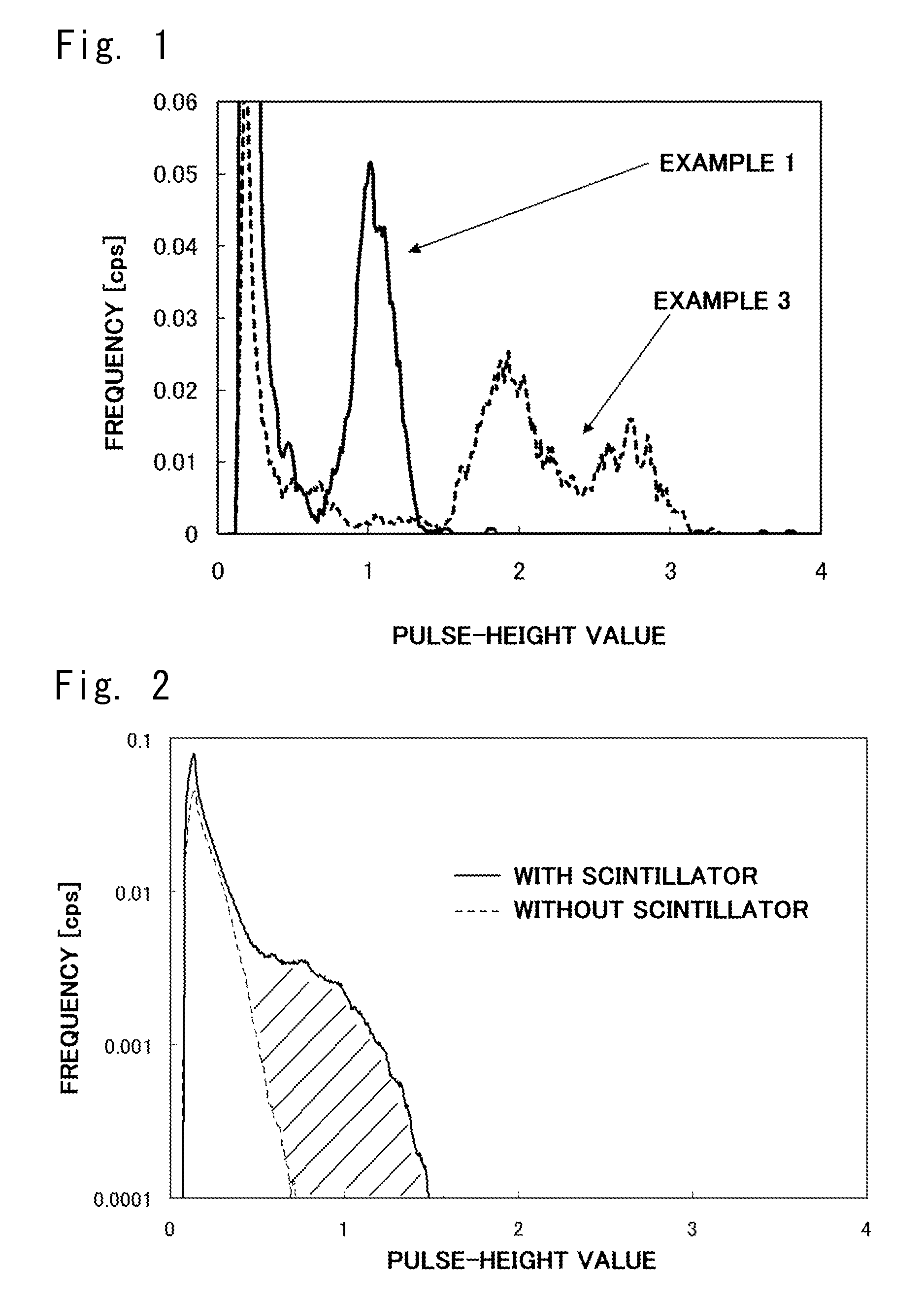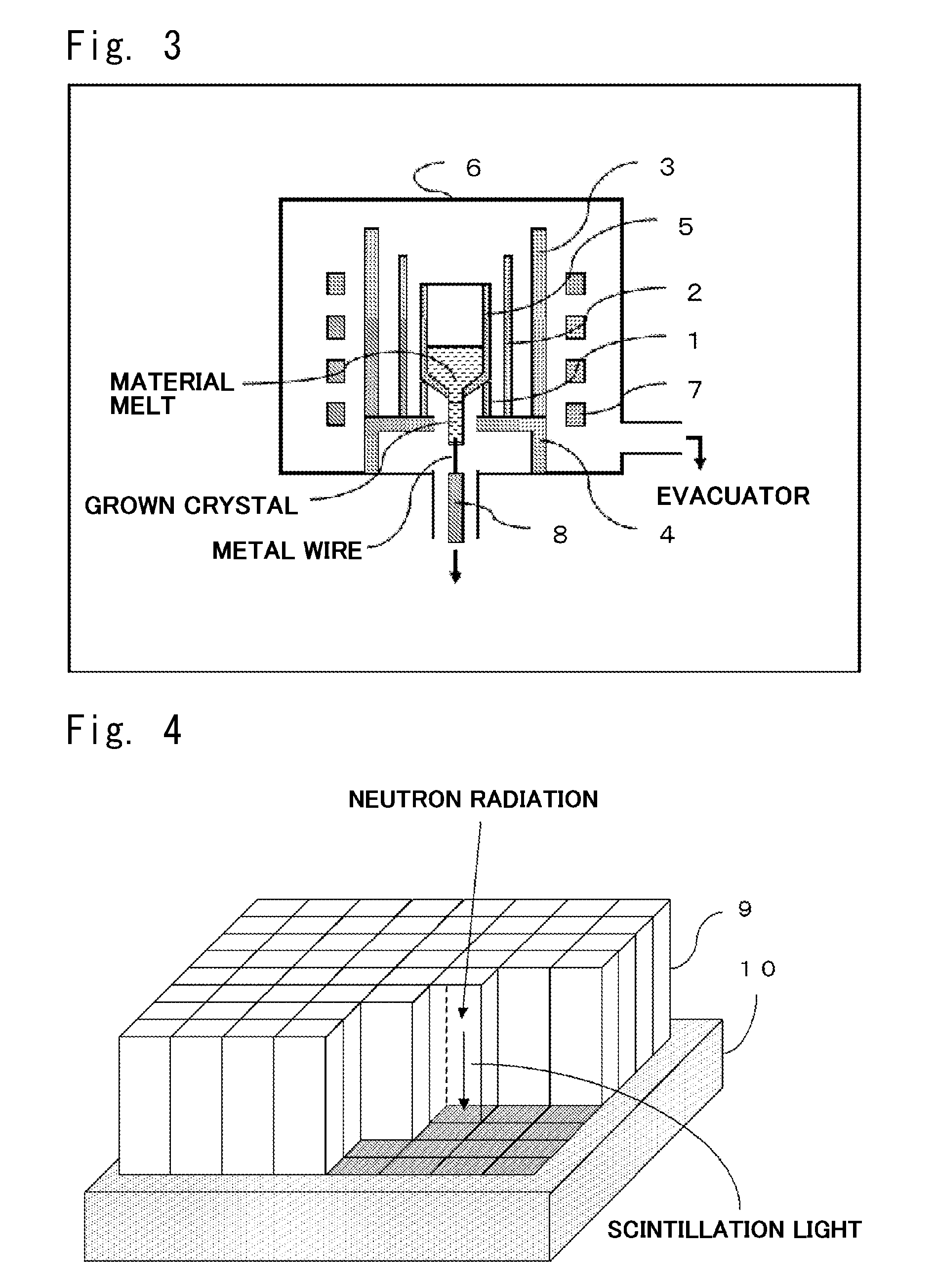Scintillator for neutron detection and neutron detector
- Summary
- Abstract
- Description
- Claims
- Application Information
AI Technical Summary
Benefits of technology
Problems solved by technology
Method used
Image
Examples
example 1
[0075]A LiCaAlF6 crystal containing Ce as a lanthanoid was produced using a crystal manufacturing apparatus by the micro-pulling-down method as shown in FIG. 3. Lithium fluoride, calcium fluoride, aluminum fluoride and cerium fluoride each having purity of 99.99% or higher were used as materials. The ti isotopic ratio of the lithium fluoride was 50%. The after-heater 1, the heater 2, the heat insulating material 3, the stage 4, and the crucible 5 made of high purity carbon were used, and the shape of the hole at the bottom of the crucible was a cylindrical shape of 2.2 mm in diameter and 0.5 mm in length.
[0076]First, 68 mg of lithium fluoride, 203 mg of calcium fluoride, 219 mg of aluminum fluoride, and 10 mg of cerium fluoride were weighed, and thoroughly mixed to obtain a material mixture, which was charged into the crucible 5. The crucible 5 charged with the materials was placed on the after-heater 1, and the heater 2 and the heat insulating material 3 were sequentially placed ar...
examples 2 to 5
[0085]The metal fluoride crystals of the present invention were obtained in the same manner as in Example 1, except that the types and amounts of the materials were as shown in Table 1. In Examples 1, 3 and 4, lithium fluoride with a 6Li isotopic ratio of 50% was used. In Example 2, lithium fluoride with a 6Li isotopic ratio of 50% and lithium fluoride with a 6Li isotopic ratio of 7.6% were mixed in equal amounts and used. In Example 5, lithium fluoride with a 6Li isotopic ratio of 7.6% was used.
[0086]The densities of the resulting metal fluoride crystals, the mass fractions of the Li elements in the metal fluoride crystals, the 6Li isotopic ratios in the lithium materials, and the 6Li contents calculated from these parameters are shown in Table 2. Moreover, the compositions of the metal fluoride crystals and the effective atomic numbers calculated from them are shown in Table 2.
[0087]The performance of the scintillators for neutron detection was evaluated by the same method as in E...
example 6
[0088]The metal fluoride crystal of the present invention was obtained in the same manner as in Example 1, except that the types and amounts of the materials were as shown in Table 1. In the present Example, lithium fluoride with a 6Li isotopic ratio of 50% was used.
[0089]The density of the resulting metal fluoride crystal, the mass fraction of the Li elements in the metal fluoride crystal, the 6Li isotopic ratio in the lithium material, and the 6Li content calculated from these parameters are shown in Table 2. Moreover, the composition of the metal fluoride crystal and the effective atomic number calculated therefrom are shown in Table 2.
[0090]The performance of the scintillator for neutron detection was evaluated by the same method as in Example 1, except that R7600 produced by HAMAMATSU PHOTONICS K.K. was used as a photomultiplier tube. Pulse-height spectra prepared are shown in FIG. 2. In these spectra, the solid line represents a spectrum prepared using the scintillator of the ...
PUM
 Login to View More
Login to View More Abstract
Description
Claims
Application Information
 Login to View More
Login to View More - R&D
- Intellectual Property
- Life Sciences
- Materials
- Tech Scout
- Unparalleled Data Quality
- Higher Quality Content
- 60% Fewer Hallucinations
Browse by: Latest US Patents, China's latest patents, Technical Efficacy Thesaurus, Application Domain, Technology Topic, Popular Technical Reports.
© 2025 PatSnap. All rights reserved.Legal|Privacy policy|Modern Slavery Act Transparency Statement|Sitemap|About US| Contact US: help@patsnap.com



